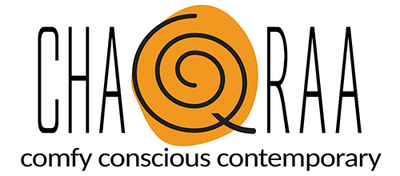If you've ever attended a yoga class, there is a good chance the instructor gave a lesson on healthy eating. One of the principles of yoga is the relationship between the body and the mind. This relationship is crucial to the practice of yoga, and it extends to the food that we eat.
In yoga, food is approached as a source of nourishment for the body and mind. The food we eat can either help or hinder our yoga practice. The ancient yogis believed that food had a direct impact on our physical, mental, and spiritual well-being. They believed that the food we eat affects our energy levels, our ability to focus, and our overall health.
The Importance of a Sattvic Diet
In yoga, there is a concept known as a sattvic diet. A sattvic diet is a diet that is pure, light, and nourishing. It is a diet that is free from toxins, additives, and preservatives. A sattvic diet is made up of foods that are fresh, whole, and natural.
The sattvic diet is based on the principle of ahimsa, which means non-violence. This principle extends to the food that we eat. A sattvic diet is a diet that is free from animal products, as the consumption of meat is seen as an act of violence towards animals.
The sattvic diet is also based on the principle of prana, which means life force. The foods that are included in a sattvic diet are believed to be high in prana, which means that they are full of life force energy. This energy is believed to be essential for maintaining good health and vitality.
The Impact of Food on the Body and Mind
The food we eat has a direct impact on our body and mind. Certain foods can make us feel sluggish, while others can give us energy and vitality. The ancient yogis believed that the food we eat affects our energy levels, our ability to focus, and our overall health.
Foods that are heavy and difficult to digest, such as meat and fried foods, are believed to be detrimental to our health. These foods are believed to clog our digestive system, which can lead to a range of health problems, including constipation, bloating, and indigestion.
On the other hand, foods that are light and easy to digest, such as fruits, vegetables, and grains, are believed to be beneficial to our health. These foods are believed to nourish our body and mind, providing us with the energy and vitality we need to practice yoga.
The Three Gunas
In yoga, there is a concept known as the three gunas. The three gunas are the three qualities of nature that exist in all things. These three gunas are tamas, rajas, and sattva.
Tamas is the quality of darkness, inertia, and laziness. Foods that are tamasic are heavy, dull, and difficult to digest. These foods are believed to have a negative impact on our body and mind, making us feel sluggish and lethargic.
Rajas is the quality of passion, activity, and restlessness. Foods that are rajasic are spicy, salty, and stimulating. These foods are believed to have a mixed impact on our body and mind, providing us with energy and vitality, but also making us feel agitated and restless.
Sattva is the quality of purity, lightness, and harmony. Foods that are sattvic are fresh, whole, and natural. These foods are believed to have a positive impact on our body and mind, providing us with energy and vitality, while also promoting a sense of calm and harmony.
Mindful Eating
In addition to the types of food we eat, the way we eat is also important in yoga. Mindful eating is a concept that is central to the practice of yoga. Mindful eating is the practice of being present and aware while we eat.
When we eat mindfully, we pay attention to the food we are eating. We take the time to savor the flavors and textures of the food. We also pay attention to our body's signals, such as hunger and fullness. By eating mindfully, we can develop a deeper connection to our body and the food we eat.
Fasting
Fasting is another aspect of the relationship between yoga and food. Fasting is the practice of abstaining from food for a period of time. Fasting is believed to have a range of health benefits, including detoxification, weight loss, and improved digestion.
In yoga, fasting is often practiced as a way to purify the body and mind. Fasting is believed to help us let go of negative emotions and thoughts, and to promote a sense of clarity and calm. Fasting is also believed to be a way to cultivate self-discipline and self-control.
Conclusion
In conclusion, food is approached in yoga as a source of nourishment for the body and mind. The sattvic diet is a diet that is pure, light, and nourishing. It is based on the principles of ahimsa and prana, and it is believed to be essential for maintaining good health and vitality.
The food we eat has a direct impact on our body and mind. Certain foods can make us feel sluggish, while others can give us energy and vitality. Mindful eating is a concept that is central to the practice of yoga. By eating mindfully, we can develop a deeper connection to our body and the food we eat.
Fasting is another aspect of the relationship between yoga and food. Fasting is believed to have a range of health benefits, including detoxification, weight loss, and improved digestion.
Overall, the relationship between yoga and food is an important one. By approaching food with mindfulness and intention, we can nourish our body and mind, and support our yoga practice.


0 comments